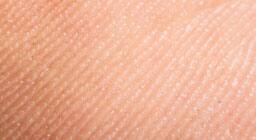Washington: Scientists have transformed ordinary skin cells into insulin producing pancreatic cells in animal models, a breakthrough that may bring an end to the agony of daily jabs for diabetics.
Scientists at the Gladstone Institutes in US developed a technique in animal models that could replenish the very cells destroyed by type 1 diabetes.
Type 1 diabetes is caused by the destruction of beta-cells, a type of cell that normally resides in the pancreas and produces a hormone called insulin.
Without insulin, the body's organs have difficulty absorbing sugars, such as glucose, from the blood.
While diabetes can be managed with regular glucose monitoring and insulin injections, a more permanent solution, however, would be to replace the missing beta-cells.
"The power of regenerative medicine is that it can potentially provide an unlimited source of functional, insulin-producing beta-cells that can then be transplanted into the patient," said Dr Sheng Ding, a professor at the University of California, San Francisco (UCSF), with which Gladstone is affiliated.
"But previous attempts to produce large quantities of healthy beta-cells - and to develop a workable delivery system - have not been entirely successful," Ding said.
The team first collected skin cells, called fibroblasts, from laboratory mice. Then, by treating the fibroblasts with a unique 'cocktail' of molecules and reprogramming factors, they transformed the cells into endoderm-like cells.
Endoderm cells are a type of cell found in the early embryo, and which eventually mature into the body's major organs - including the pancreas.
"Using another chemical cocktail, we then transformed these endoderm-like cells into cells that mimicked early pancreas-like cells, which we called PPLC's," said Gladstone Postdoctoral Scholar Ke Li, the paper's lead author.
"Our initial goal was to see whether we could coax these PPLC's to mature into cells that, like beta-cells, respond to the correct chemical signals and - most importantly - secrete insulin. And our initial experiments, performed in a petri dish, revealed that they did," Li said.
The research team then wanted to see whether the same would occur in live animal models. So they transplanted PPLC's into mice modified to have hyperglycemia (high glucose levels), a key indicator of diabetes.
"Importantly, just one week post-transplant, the animals' glucose levels started to decrease gradually approaching normal levels," said Li.
"And when we removed the transplanted cells, we saw an immediate glucose spike, revealing a direct link between the transplantation of the PPLC's and reduced hyperglycemia," Li said.
When the team tested the mice eight weeks post-transplant that they saw more dramatic changes: the PPLC's had given rise to fully functional, insulin-secreting beta-cells.
The study is published in the journal Cell Stem Cell.
















